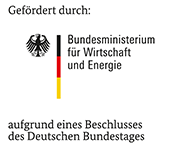13266 N

Hochtemperaturofen in Betrieb
| Period: | 2002-05-01 to 2005-09-30 |
|---|---|
| Funder: | Federal Ministry for Economics and Technology (BMWI, Germany) via AiF |
| Project Manager: | Sébastien Doublet |
| Research Group: | High Temperature Materials |
Chlorine is widely encountered in high temperature environments of energy conversion and chemical industries such as coal-fired boilers, waste incinerators and plastic/polymer decomposition mills. Its attack on structural materials at high temperature still represents a serious problem for these industries. This corrosion phenomenon needs to be limited. A solution would be the use of chlorine resistant alloys or materials coated with elements identified as chlorine resistant. Corrosion resistance of materials at high temperatures in oxidizing atmospheres is usually obtained by the formation of a protective surface oxide scale. Under ordinary oxidation conditions three alloying elements are mainly able to form such a protective scale, i.e. Al, Cr and Si. Under chloridizing conditions the situation is much more complex. The protective scale formation may be considerably affected by the presence of chlorine, since it can either attack the formed oxide layer or the underlying metal by passing through cracks or pores in the oxide layer. This impedes the formation of a protective dense oxide scale. This corrosion process is well-known under the name "active oxidation".
The corrosion attack depends on temperature, chlorine and oxygen partial pressures as well as on the alloying elements contained in the materials. Furthermore the gas flows as well as the specimens geometry modify the stabilty of the alloys. A material is considered as sufficiently corrosion resistant, if the vapor pressure of the formed volatile metal-chloride does not exceed the value of 10-4bar. This corresponds to a corrosion rate of approximately 1mm per year. More detailed investigations resulted in the conclusion that this criterion would need further refinement in particular under reducing conditions. In the frame of this project stability diagrams were developed for alloying elements and corrosion protection layers based on some more advanced considerations.
back
Das IGF-Vorhaben Nr. 13266 N der Forschungsvereinigung DECHEMA e.V., Theodor-Heuss-Allee 25, 60486 Frankfurt am Main wurde über die AiF im Rahmen des Programms zur Förderung der industriellen Gemeinschaftsforschung (IGF) vom Bundesministerium für Wirtschaft und Energie aufgrund eines Beschlusses des Deutschen Bundestages gefördert.